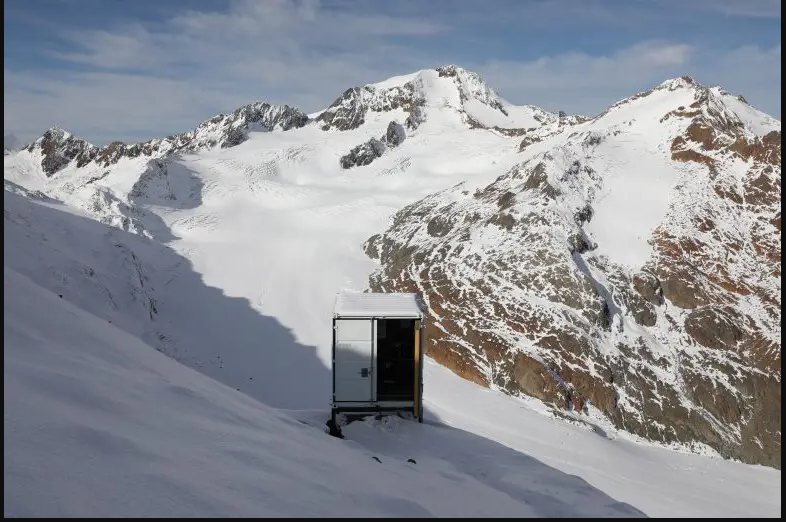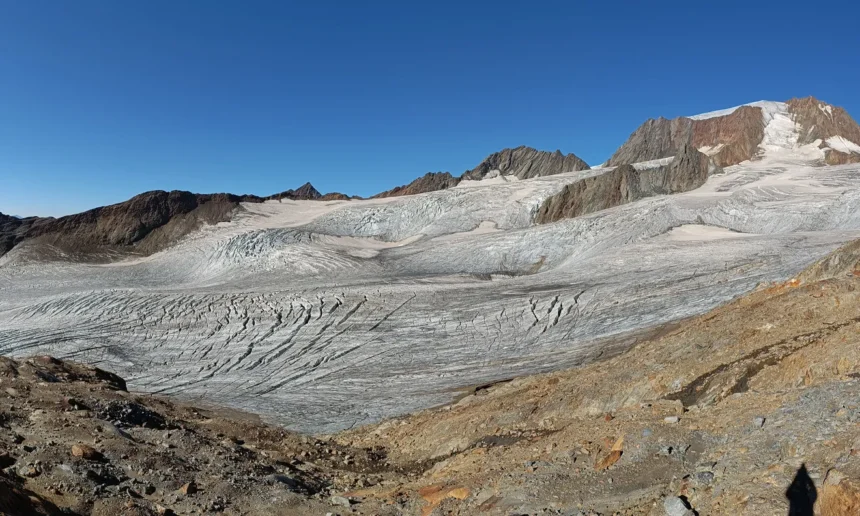One of Tyrol’s largest glaciers loss recorded the greatest mass loss on record in the summer of 2022. In Tyrol, Austria, the Hintereisferner reached its Glacier Loss 3000 Day (GLD) earlier than ever before last year.
Glacier loss
The Hintereisferner glacier, which is situated deep within the Tyrolean tztal, has been carefully monitored for more than a century. It is among the most thoroughly studied glaciers in the Alps since records documenting its mass balance have been routinely kept since 1952. It has long been a focal point of glacier and climate research at the University of Innsbruck.
Since 2016, the researchers have also been measuring the glacier using a technology that is unmatched anywhere in the world: a terrestrial laser scanner scans the glacier’s surface every day, returning data on changes in the elevation of the glacier’s surface.
This allows for real-time monitoring of the Hintereisferner’s volume change. The measurement was conducted on-site at the Hintereisferner by Innsbruck glaciologist Annelies Voordendag, and the findings of the researchers’ inquiries have now been published as a highlighted article in the journal The Cryosphere.

Early in the summer of 2022, it became apparent that the day when the glacier’s winter accumulation of ice begins to melt away would be very soon. This day is referred to as “Glacier Loss Day” or GLD for short. It is comparable to Earth Overshoot Day, which commemorates the day when human activity depletes the planet’s natural resources faster than they can be replenished in a year, according to Annelies Voordendag.
A daily assessment of a glacier’s volume and mass changes allows for a fast evaluation of the glacier’s state at any given time.
Observing glaciers’ health
When the GLD appears, it indicates that the glacier is no longer in harmony with the year’s natural circumstances. The longer the remaining summer is, the more likely it is that the glacier will lose volume and, consequently, mass.

With the automated terrestrial laser scanning system overlooking the glacier, “we track the daily volume changes and derive the day that the mass gained during winter has been lost,” says Voordendag. On June 23rd of 2022, the GLD was measured. Glacier Loss Day was only reached in the middle of August the two prior years.
This day was not reached until the end of July in years with high negative balances, such as 2003 and 2018.
Since the developments fall outside the typical fluctuation ranges, the trend is obvious to glaciologists even though not every summer in the future will necessarily be like the one in 2022: “These are unequivocal evidence of anthropogenic climate change. We are currently experiencing severe effects from our greenhouse gas emissions, adds glaciologist Rainer Prinz of the Innsbruck working group “Ice and Climate.”
The development predictions for the future do not offer a hopeful outlook either. In 10 to 20 years, only half of the Hintereisferner will be remaining, according to the team’s analysis. These are unmistakable signs of climate change brought on by human-caused global warming and the effects of our greenhouse gas emissions, which are already having a significant impact on our daily lives.
Reference: “Brief communication: The Glacier Loss Day as an indicator of a record-breaking negative glacier mass balance in 2022” by Annelies Voordendag, Rainer Prinz, Lilian Schuster and Georg Kaser, 29 August 2023, The Cryosphere.




































